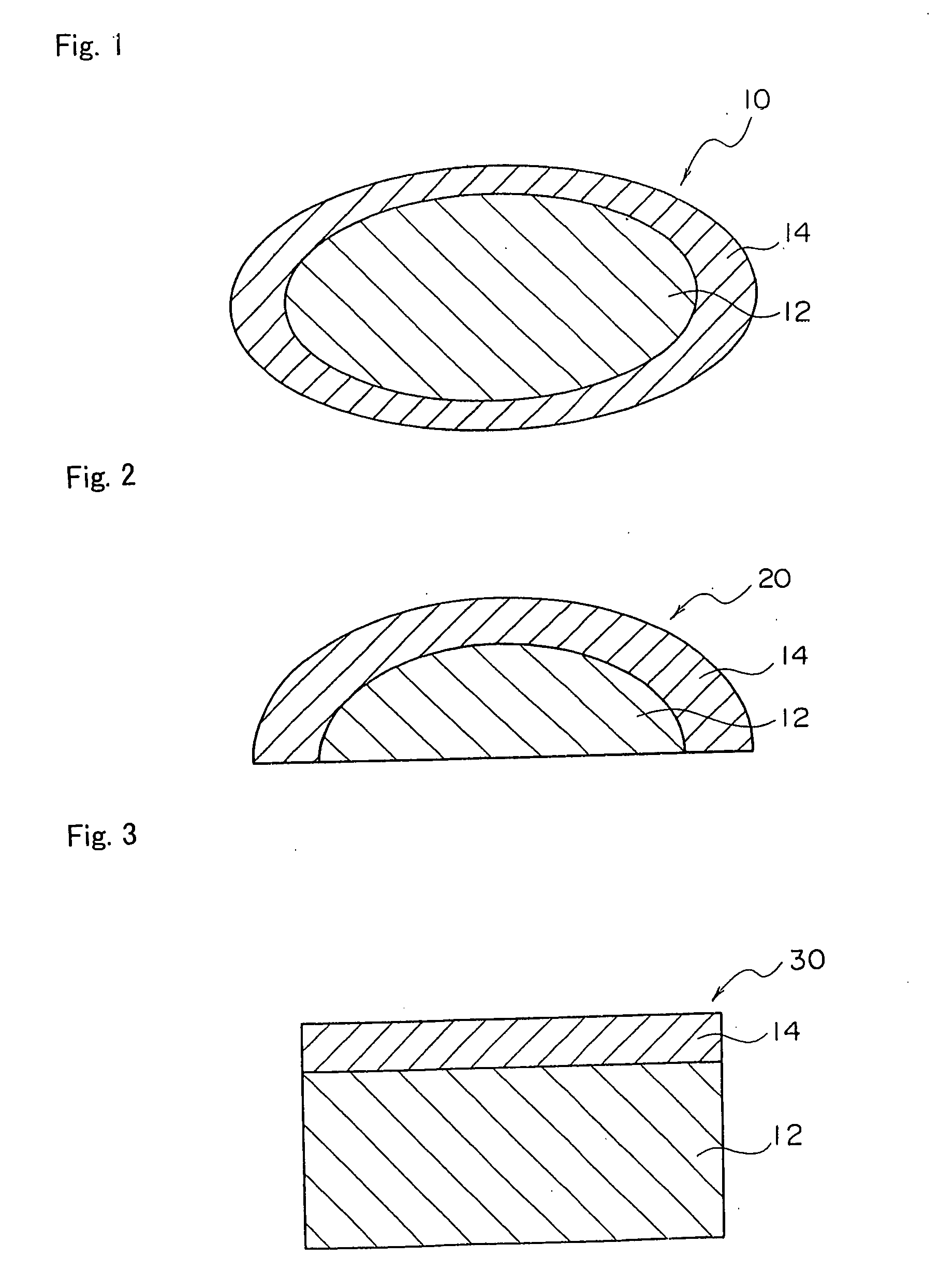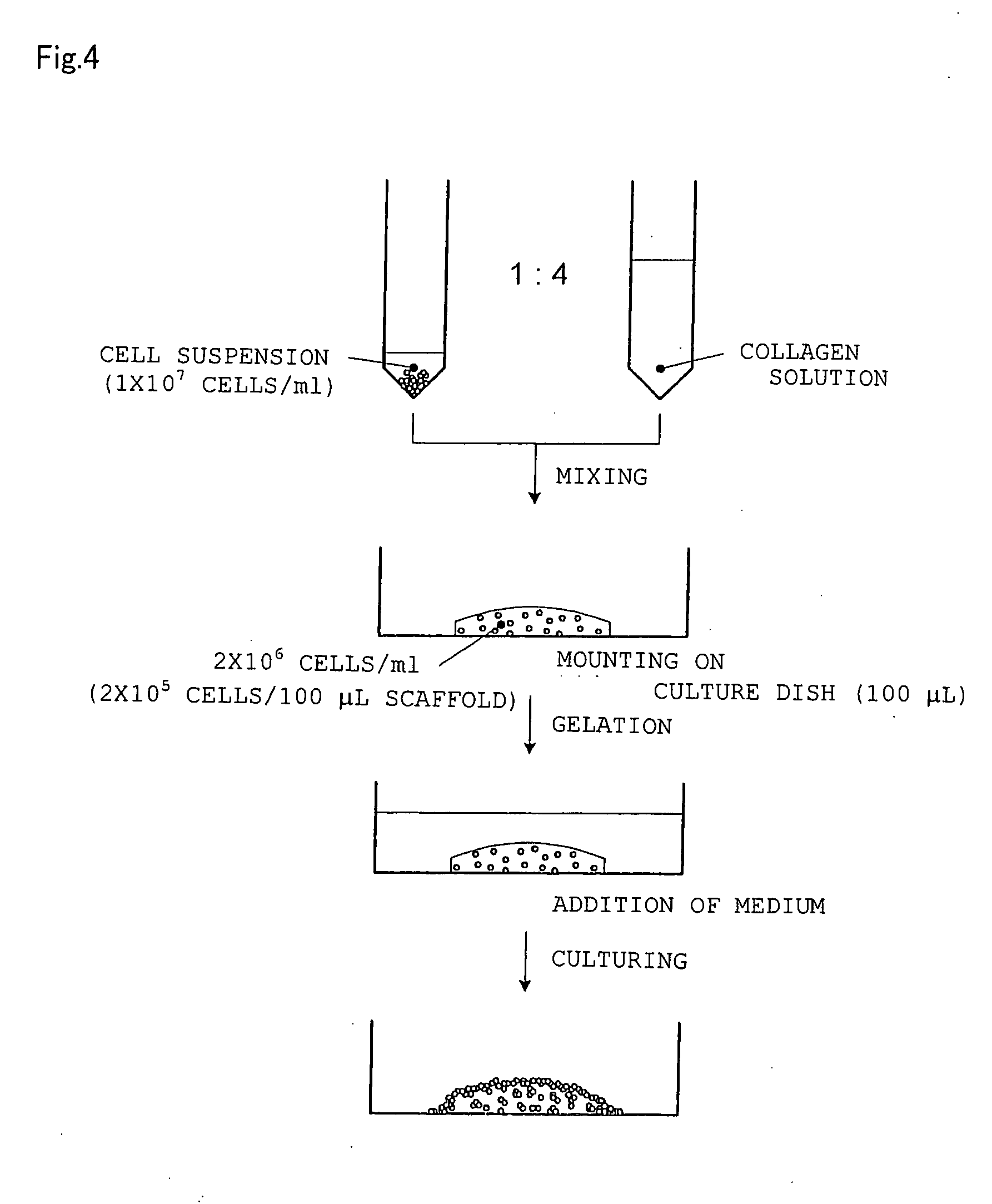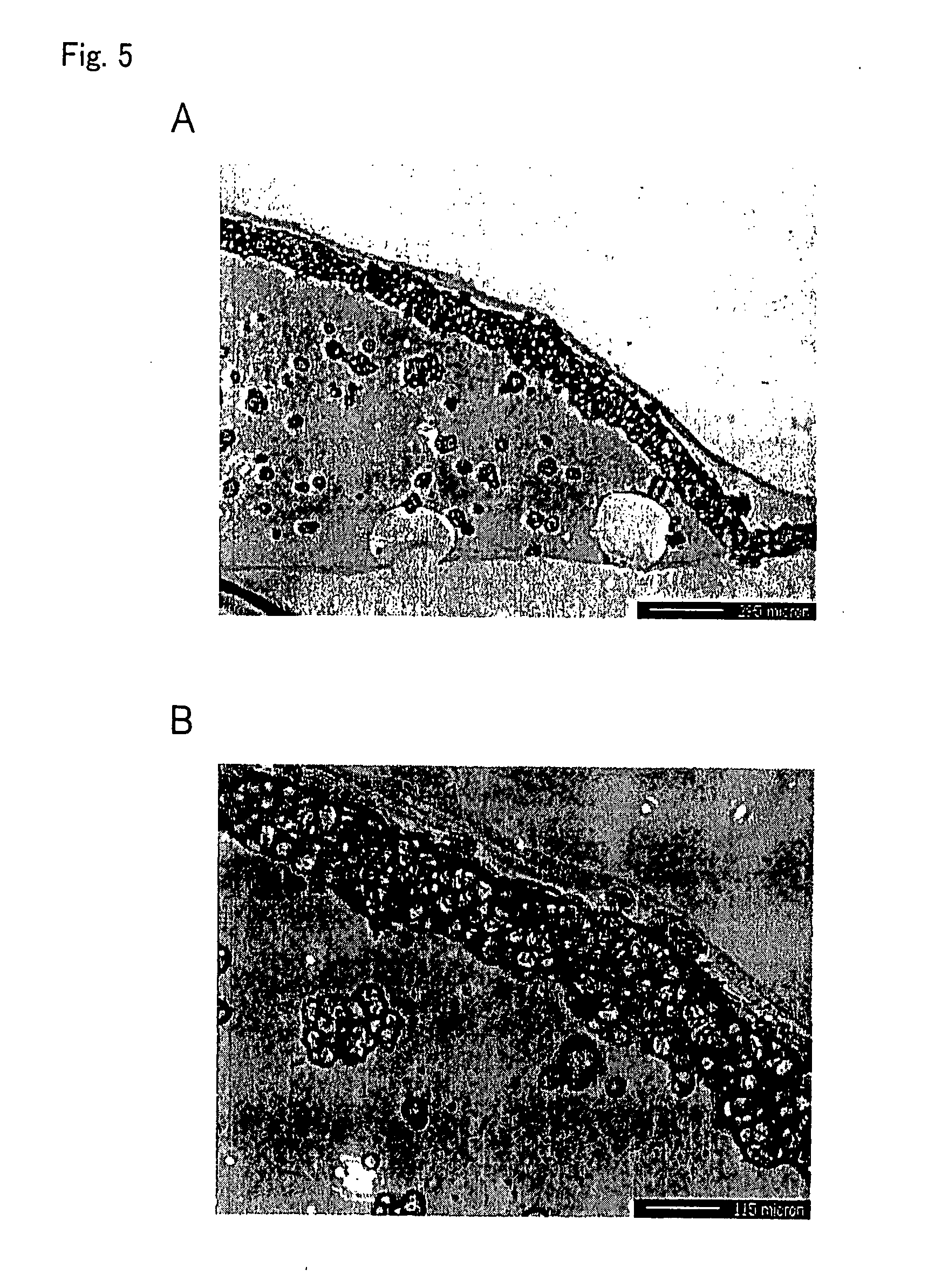Tissue equivalent for transplantation and method for producing same
a tissue equivalent and tissue technology, applied in the direction of artificial cell constructs, prosthesis, drug compositions, etc., can solve the problems of difficult tissue formation whereby the cells are distributed relatively uniformly, nutrient substances often do not sufficiently spread through to the inside, and the density is too high, etc., to achieve the effect of easy formation
- Summary
- Abstract
- Description
- Claims
- Application Information
AI Technical Summary
Benefits of technology
Problems solved by technology
Method used
Image
Examples
examples 3 to 6
[0067] Culture was started in the same manner as in Example 1 except that the seeding cell density was changed so as to be 2×103 cells / 100 μl scaffold (Example 3), 2×104 cells / 100 μl scaffold (Example 4), 2×105 cells / 100 μl scaffold (Example 5), and 2×106 cells / 100 μl scaffold (Example 6), respectively. The number of the cells and the morphology of the tissue equivalent were examined every 7 days. The results are shown in Table 1.
[0068] In Table 1, x represents the case where the bilayer structure was scarcely observed, Δ represents the case where the bilayer structure was partially observed, and o represents the case where the bilayer structure was observed, respectively.
[0069] As can be seen from these results, a tissue equivalent can be obtained after culture for a given period with any of the above-mentioned seeding cell densities. In addition, the bilayer structure was formed on a part of the surface of the tissue equivalent on about the 10th day when seeding was carried out ...
PUM
| Property | Measurement | Unit |
|---|---|---|
| Density | aaaaa | aaaaa |
Abstract
Description
Claims
Application Information
 Login to View More
Login to View More - R&D
- Intellectual Property
- Life Sciences
- Materials
- Tech Scout
- Unparalleled Data Quality
- Higher Quality Content
- 60% Fewer Hallucinations
Browse by: Latest US Patents, China's latest patents, Technical Efficacy Thesaurus, Application Domain, Technology Topic, Popular Technical Reports.
© 2025 PatSnap. All rights reserved.Legal|Privacy policy|Modern Slavery Act Transparency Statement|Sitemap|About US| Contact US: help@patsnap.com



